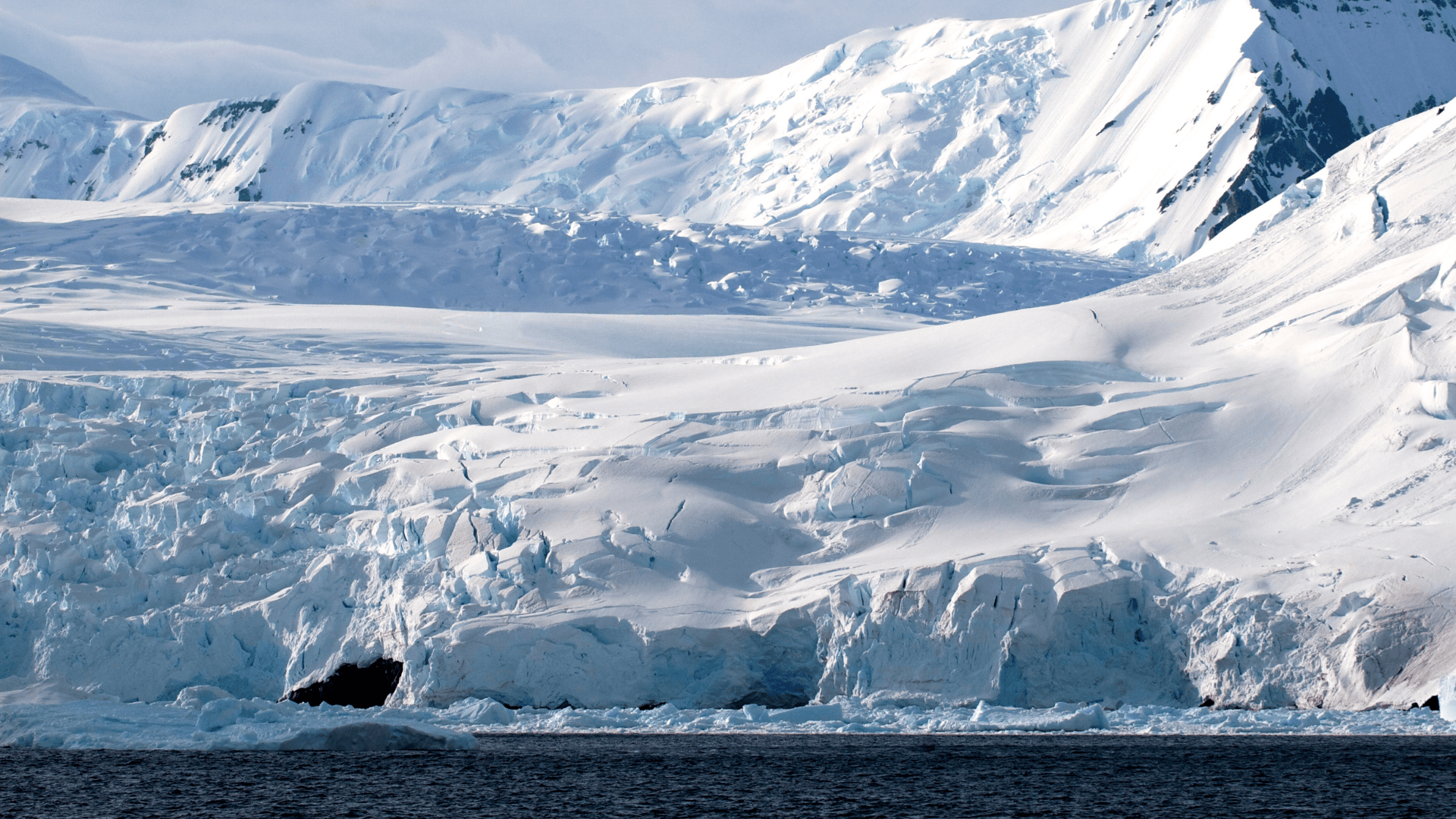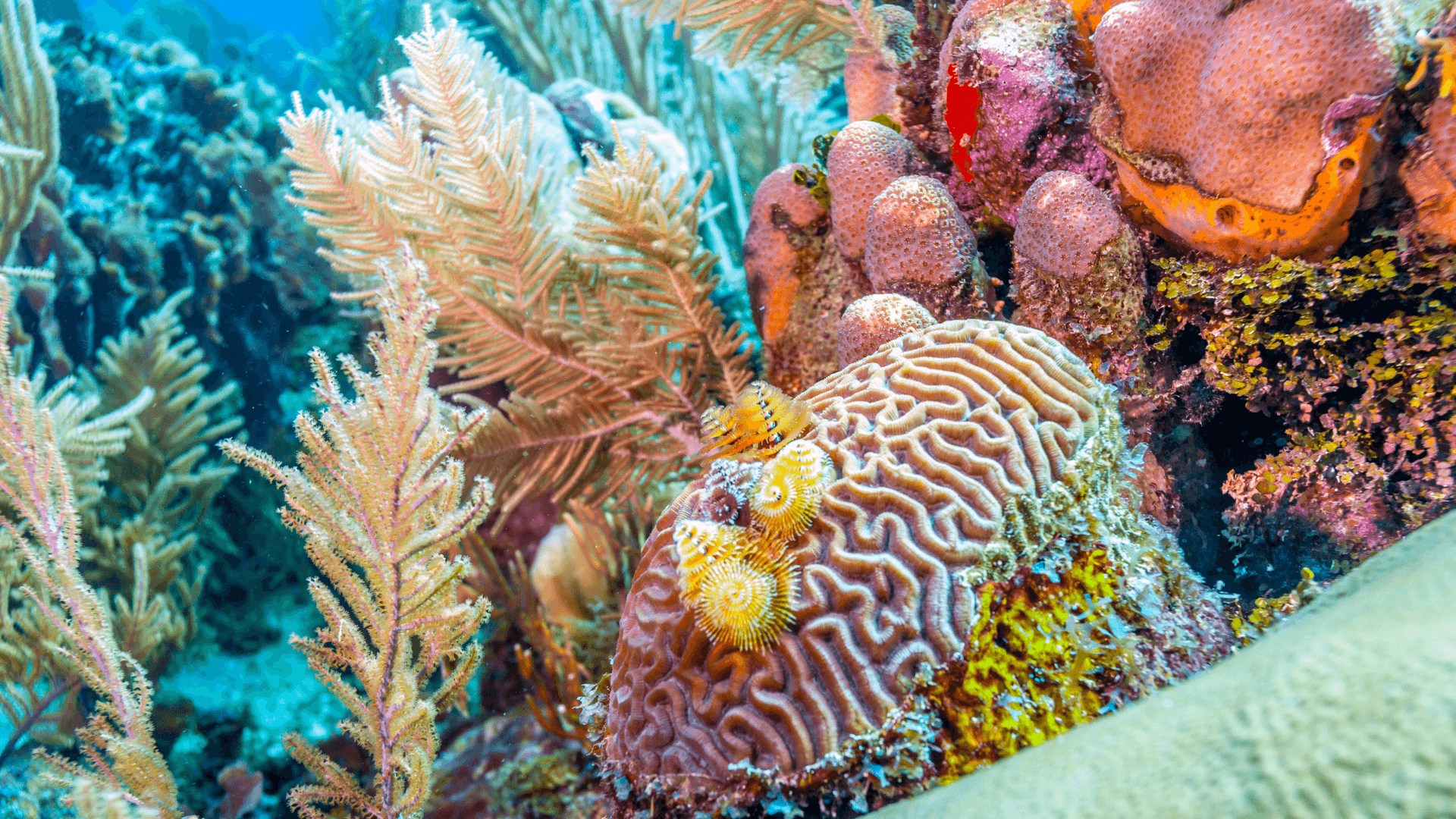Collapse of the Conger Ice Shelf: Alert for East Antarctica
Collapse of the Conger Ice Shelf: Alert for East Antarctica
Collapse of the Conger Ice Shelf: Alert for East Antarctica
Dec 20, 2024
Dec 20, 2024
Dec 20, 2024

Illustrative image. Credit: Getty Images via Canva.
Illustrative image. Credit: Getty Images via Canva.
Illustrative image. Credit: Getty Images via Canva.
In 2022, the Conger ice shelf in East Antarctica rapidly collapsed, highlighting the vulnerability of polar ice caps to climate change. Learn more about the study details and its implications.
In 2022, the Conger ice shelf in East Antarctica rapidly collapsed, highlighting the vulnerability of polar ice caps to climate change. Learn more about the study details and its implications.
In 2022, the Conger ice shelf in East Antarctica rapidly collapsed, highlighting the vulnerability of polar ice caps to climate change. Learn more about the study details and its implications.
In March 2022, the Conger ice shelf, located in East Antarctica, experienced a dramatic collapse that surprised scientists worldwide. In less than a week, this massive 1,200 km² structure fragmented into icebergs, demonstrating the increasing vulnerability of polar ice caps to climate change. A study published in the Nature Geoscience journal revealed the factors that led to the collapse and highlighted its implications for Antarctica's future.
The Rapid Collapse of the Conger Ice Shelf
The collapse of the Conger ice shelf stood out for its magnitude and rapid speed, challenging the perception of stability in East Antarctica.
The ice shelf is in one of the continent's traditionally considered most stable regions and contributes to the global climate balance. East Antarctica contains most of the planet's land ice, which is paramount for regulating sea levels and maintaining the stability of polar ecosystems.
Despite this, in just six days, Conger completely disintegrated, transforming into icebergs now floating in the Antarctic Ocean. This was one of the fastest collapses ever recorded in an area historically viewed as resilient.
Decades of Gradual Weakening and Factors Accelerating the Collapse
Although the collapse of the Conger ice shelf occurred abruptly, it was preceded by decades of structural weakening caused by ongoing processes.
Since 1994, the ice shelf's thickness has decreased from 200 meters to 130 meters, with thinning accelerated by basal melting from warmer ocean waters. Simultaneously, the emergence of cracks along the structure allowed salty water infiltration, further exacerbating its weakening. This gradual process left Conger vulnerable to external forces, creating the conditions for the final collapse.
The catastrophic outcome was intensified by specific climatic and oceanographic conditions that triggered the rupture. At the time of the collapse, an intense storm created ocean swells and strong winds, further destabilizing the weakened structure.
Simultaneously, since 2010, changes in ocean currents began bringing slightly warmer waters to the region, accelerating the ice shelf's basal melting. The combination of these factors resulted in the rapid disintegration of Conger.
Implications for East Antarctica
While the collapse of the Conger ice shelf did not immediately influence global sea levels, it serves as a concerning warning about East Antarctica's increasing vulnerability to climate change.
This region, which contains about ten times more ice than West Antarctica, is fundamental for maintaining the global sea level balance. The fall of Conger highlights that even areas considered stable are being significantly affected by climate transformations, increasing the risk of similar collapses in the future.
Nearby Conger is the Denman Glacier, an immense ice mass that can raise global sea levels by up to 1.5 meters. Should the shelf supporting Denman collapse, the consequences could be irreversible, with catastrophic implications for the planet.
Challenges for Climate Projections
The collapse of Conger also exposed limitations in current climate models, which underestimated East Antarctica's vulnerability. Previous studies predicted that this region could gain ice mass over the century due to increased precipitation.
However, the Conger event indicates that East Antarctic ice shelves are more susceptible to global warming than previously thought, necessitating urgent revisions in computational models. Besides, if other shelves exhibit similar behavior, East Antarctica's contribution to sea level rise will be much greater than current estimates indicate.
—
Access the whole study published in the Nature Geoscience journal and read the original report on Science News to understand better how climate change impacts Antarctica.
In March 2022, the Conger ice shelf, located in East Antarctica, experienced a dramatic collapse that surprised scientists worldwide. In less than a week, this massive 1,200 km² structure fragmented into icebergs, demonstrating the increasing vulnerability of polar ice caps to climate change. A study published in the Nature Geoscience journal revealed the factors that led to the collapse and highlighted its implications for Antarctica's future.
The Rapid Collapse of the Conger Ice Shelf
The collapse of the Conger ice shelf stood out for its magnitude and rapid speed, challenging the perception of stability in East Antarctica.
The ice shelf is in one of the continent's traditionally considered most stable regions and contributes to the global climate balance. East Antarctica contains most of the planet's land ice, which is paramount for regulating sea levels and maintaining the stability of polar ecosystems.
Despite this, in just six days, Conger completely disintegrated, transforming into icebergs now floating in the Antarctic Ocean. This was one of the fastest collapses ever recorded in an area historically viewed as resilient.
Decades of Gradual Weakening and Factors Accelerating the Collapse
Although the collapse of the Conger ice shelf occurred abruptly, it was preceded by decades of structural weakening caused by ongoing processes.
Since 1994, the ice shelf's thickness has decreased from 200 meters to 130 meters, with thinning accelerated by basal melting from warmer ocean waters. Simultaneously, the emergence of cracks along the structure allowed salty water infiltration, further exacerbating its weakening. This gradual process left Conger vulnerable to external forces, creating the conditions for the final collapse.
The catastrophic outcome was intensified by specific climatic and oceanographic conditions that triggered the rupture. At the time of the collapse, an intense storm created ocean swells and strong winds, further destabilizing the weakened structure.
Simultaneously, since 2010, changes in ocean currents began bringing slightly warmer waters to the region, accelerating the ice shelf's basal melting. The combination of these factors resulted in the rapid disintegration of Conger.
Implications for East Antarctica
While the collapse of the Conger ice shelf did not immediately influence global sea levels, it serves as a concerning warning about East Antarctica's increasing vulnerability to climate change.
This region, which contains about ten times more ice than West Antarctica, is fundamental for maintaining the global sea level balance. The fall of Conger highlights that even areas considered stable are being significantly affected by climate transformations, increasing the risk of similar collapses in the future.
Nearby Conger is the Denman Glacier, an immense ice mass that can raise global sea levels by up to 1.5 meters. Should the shelf supporting Denman collapse, the consequences could be irreversible, with catastrophic implications for the planet.
Challenges for Climate Projections
The collapse of Conger also exposed limitations in current climate models, which underestimated East Antarctica's vulnerability. Previous studies predicted that this region could gain ice mass over the century due to increased precipitation.
However, the Conger event indicates that East Antarctic ice shelves are more susceptible to global warming than previously thought, necessitating urgent revisions in computational models. Besides, if other shelves exhibit similar behavior, East Antarctica's contribution to sea level rise will be much greater than current estimates indicate.
—
Access the whole study published in the Nature Geoscience journal and read the original report on Science News to understand better how climate change impacts Antarctica.
In March 2022, the Conger ice shelf, located in East Antarctica, experienced a dramatic collapse that surprised scientists worldwide. In less than a week, this massive 1,200 km² structure fragmented into icebergs, demonstrating the increasing vulnerability of polar ice caps to climate change. A study published in the Nature Geoscience journal revealed the factors that led to the collapse and highlighted its implications for Antarctica's future.
The Rapid Collapse of the Conger Ice Shelf
The collapse of the Conger ice shelf stood out for its magnitude and rapid speed, challenging the perception of stability in East Antarctica.
The ice shelf is in one of the continent's traditionally considered most stable regions and contributes to the global climate balance. East Antarctica contains most of the planet's land ice, which is paramount for regulating sea levels and maintaining the stability of polar ecosystems.
Despite this, in just six days, Conger completely disintegrated, transforming into icebergs now floating in the Antarctic Ocean. This was one of the fastest collapses ever recorded in an area historically viewed as resilient.
Decades of Gradual Weakening and Factors Accelerating the Collapse
Although the collapse of the Conger ice shelf occurred abruptly, it was preceded by decades of structural weakening caused by ongoing processes.
Since 1994, the ice shelf's thickness has decreased from 200 meters to 130 meters, with thinning accelerated by basal melting from warmer ocean waters. Simultaneously, the emergence of cracks along the structure allowed salty water infiltration, further exacerbating its weakening. This gradual process left Conger vulnerable to external forces, creating the conditions for the final collapse.
The catastrophic outcome was intensified by specific climatic and oceanographic conditions that triggered the rupture. At the time of the collapse, an intense storm created ocean swells and strong winds, further destabilizing the weakened structure.
Simultaneously, since 2010, changes in ocean currents began bringing slightly warmer waters to the region, accelerating the ice shelf's basal melting. The combination of these factors resulted in the rapid disintegration of Conger.
Implications for East Antarctica
While the collapse of the Conger ice shelf did not immediately influence global sea levels, it serves as a concerning warning about East Antarctica's increasing vulnerability to climate change.
This region, which contains about ten times more ice than West Antarctica, is fundamental for maintaining the global sea level balance. The fall of Conger highlights that even areas considered stable are being significantly affected by climate transformations, increasing the risk of similar collapses in the future.
Nearby Conger is the Denman Glacier, an immense ice mass that can raise global sea levels by up to 1.5 meters. Should the shelf supporting Denman collapse, the consequences could be irreversible, with catastrophic implications for the planet.
Challenges for Climate Projections
The collapse of Conger also exposed limitations in current climate models, which underestimated East Antarctica's vulnerability. Previous studies predicted that this region could gain ice mass over the century due to increased precipitation.
However, the Conger event indicates that East Antarctic ice shelves are more susceptible to global warming than previously thought, necessitating urgent revisions in computational models. Besides, if other shelves exhibit similar behavior, East Antarctica's contribution to sea level rise will be much greater than current estimates indicate.
—
Access the whole study published in the Nature Geoscience journal and read the original report on Science News to understand better how climate change impacts Antarctica.
Compartir en:
Compartir en:
Ver También
Ver También

DeepSeek AI: el chatbot chino que está sacudiendo el mercado global
Feb 7, 2025

Estudio revela que la vida social activa puede reducir el riesgo de demencia
Feb 4, 2025

Año nuevo lunar 2025: la llegada del año de la serpiente
Jan 30, 2025

Nueva hipótesis sobre el origen de los dinosaurios desafía conceptos tradicionales
Jan 27, 2025

Colapso de la plataforma de hielo Conger: alerta para la Antártida Oriental
Dec 20, 2024

Emociones y el cuerpo humano: conexiones milenarias en textos neoasirios
Dec 20, 2024

Un estudio relaciona la contaminación atmosférica con el riesgo de tromboembolia venosa
Dec 20, 2024

Ambiente potencialmente habitable en Marte descubierto por Perseverance
Dec 20, 2024

Revolución XRISM: Nuevos descubrimientos sobre agujeros negros supermasivos
Oct 15, 2024

Estudio aponta que la duplicación del gen AMY1, relacionado con la digestión del almidón, precede a la agricultura
Oct 14, 2024

Nacimientos en la UE caen por debajo de los 4 millones por primera vez desde 1960
Oct 11, 2024

Excavación en Dinamarca revela 50 esqueletos Viking increíblemente preservados
Oct 10, 2024

Estudio detecta mayor incidencia de asma y rinitis alérgica en personas nacidas en otoño e invierno en Finlandia
Oct 9, 2024

Estudio señala similitudes entre la pubertad de adolescentes de la Edad de Hielo y jóvenes modernos
Oct 8, 2024

Análisis de ADN en momias chinas de 3.600 años revela el queso más antiguo del mundo
Oct 7, 2024

Estudio revela estabilidad genética de poblaciones del África Austral durante 10 milenios
Oct 4, 2024

Nueve lugares míticos que podrían haber existido, según descubrimientos arqueológicos
Oct 3, 2024

Cómo los derechos humanos pueden salvar los arrecifes de coral y responsabilizar a los gobiernos
Oct 2, 2024

Informe de Carbon Brief señala que 2024 podría ser el año más cálido de la historia
Sep 4, 2024

El clima determina la distribución de mamíferos, revela estudio de la Universidad Estatal de Carolina del Norte
Sep 4, 2024

DeepSeek AI: el chatbot chino que está sacudiendo el mercado global
Feb 7, 2025

Estudio revela que la vida social activa puede reducir el riesgo de demencia
Feb 4, 2025

Año nuevo lunar 2025: la llegada del año de la serpiente
Jan 30, 2025

Nueva hipótesis sobre el origen de los dinosaurios desafía conceptos tradicionales
Jan 27, 2025

Colapso de la plataforma de hielo Conger: alerta para la Antártida Oriental
Dec 20, 2024

Emociones y el cuerpo humano: conexiones milenarias en textos neoasirios
Dec 20, 2024

Un estudio relaciona la contaminación atmosférica con el riesgo de tromboembolia venosa
Dec 20, 2024

Ambiente potencialmente habitable en Marte descubierto por Perseverance
Dec 20, 2024

Revolución XRISM: Nuevos descubrimientos sobre agujeros negros supermasivos
Oct 15, 2024

Estudio aponta que la duplicación del gen AMY1, relacionado con la digestión del almidón, precede a la agricultura
Oct 14, 2024

Nacimientos en la UE caen por debajo de los 4 millones por primera vez desde 1960
Oct 11, 2024

Excavación en Dinamarca revela 50 esqueletos Viking increíblemente preservados
Oct 10, 2024

Estudio detecta mayor incidencia de asma y rinitis alérgica en personas nacidas en otoño e invierno en Finlandia
Oct 9, 2024

Estudio señala similitudes entre la pubertad de adolescentes de la Edad de Hielo y jóvenes modernos
Oct 8, 2024

Análisis de ADN en momias chinas de 3.600 años revela el queso más antiguo del mundo
Oct 7, 2024

Estudio revela estabilidad genética de poblaciones del África Austral durante 10 milenios
Oct 4, 2024

Nueve lugares míticos que podrían haber existido, según descubrimientos arqueológicos
Oct 3, 2024

Cómo los derechos humanos pueden salvar los arrecifes de coral y responsabilizar a los gobiernos
Oct 2, 2024

Informe de Carbon Brief señala que 2024 podría ser el año más cálido de la historia
Sep 4, 2024

El clima determina la distribución de mamíferos, revela estudio de la Universidad Estatal de Carolina del Norte
Sep 4, 2024